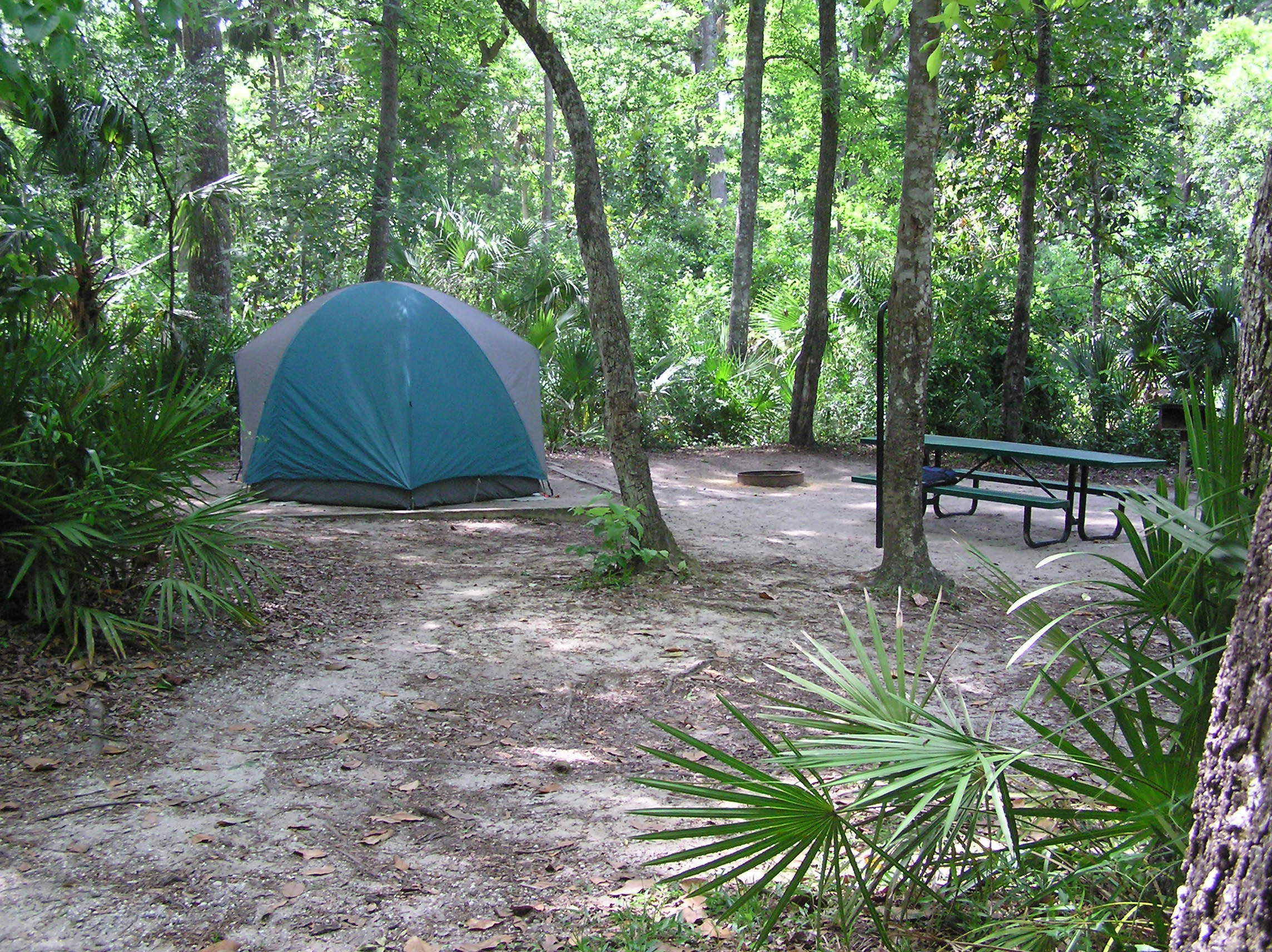|
|
|
|
Camping
With dozens of campgrounds, ranging from
full-service to primitive walk-in tent camping, scattered throughout the Ocala National
Forest, plus a few cabins for large families and small groups, the Forest offers a variety of
outdoor accommodations to suit all interests.
Visitors are welcome to stay as long as fourteen days in most campgrounds and even longer in other
campgrounds, depending on the season.
|
Sleeping under the stars along a sparkling lake or
in a shady forest: what better way to get your family back in touch with the outdoors? A
relaxed evening in a
tent or trailer rejuvenates you for the next work week.

The majority of camping is on a first-come, first-serve basis. Salt Springs, Juniper Springs,
Alexander Springs and Clearwater Lake now take reservations through ReserveUSA, in addition to a first-come,
first-serve basis. All of the group campgrounds and cabins are by reservation only.
Camping can be divided into three classes based on the type of facilities offered and
fees charged; developed campgrounds, primitive campsites and dispersed tent camping. Developed campgrounds provide
a variety of amenities including; showers, restrooms, picnic tables, charcoal grills, fire rings, lantern holders,
drinking water, sanitation facilities and trash receptacles. Primitive campsites provide very few if any of these
amenities. Dispersed tent camping is for the adventurous that prefer no facilities at all and is permitted
throughout the general forest area.
Fees at developed areas range from $4.00 to just over $20.00, while primitive and
dispersed camping is free. Camping permits and discount passports for senior and disabled U.S. citizens are
available.
Developed Campgrounds:
The
word Ocala is thought to be a derivative of a Timucuan Indian term meaning fair land or big
hammock. The Ocala's vegetation lives up to its name, as you will discover towering palms, huge live oaks and
scrubby sand pines. Developed campgrounds in the Ocala are nestled in each of these settings. Of the twenty
developed campgrounds, only Salt Springs offers full hook-up service. However, several campgrounds have dump
stations and shower facilities. The remaining campgrounds offer fewer amenities. All of Ocala's campgrounds allow
pets, but they must be kept on a leash no longer than six feet and are not permitted in designated swimming and
picnicking areas. Many swimming areas also prohibit alcohol.
An annual pass is available for several of the campgrounds. Because these campgrounds
have fewer amenities, the proceeds from the sales of the passes go towards improvements. These annual passes are
part of the fee demo program and are sold at Ocala's visitor centers and ranger stations.
Accessible campsites, restrooms, showers and walkways are available throughout
various campgrounds in the Ocala National Forest. Call the appropriate district to determine if the facility you
have chosen will suit your needs.
Primitive Camping:
The
Leave No Trace ethic is a consideration for all visitors whether they are dispersed camping, primitive
camping or developed camping. To leave no trace of ourselves each time we use the Forest can be challenging, but
every effort to maintain the natural state of the area will contribute to protecting it from overuse. Remember to
remove all garbage and trash, pack it in, pack it out. Leave vegetation intact, replace sticks and logs
that were moved to clear areas for tents and campfires, and preserve water systems. Erasing evidence of our
presence will keep each individual's impact on the Forest at a minimum.
Primitive campsites, can be used by individuals camping with
tents or any motorized vehicle. These are specific areas in the forest that offer
little or no facilities. Some of these campsites are also hunt camps and may be open year round. Those that are not
hunt camps will be closed during the established hunting season. While any motorized vehicle is permitted in these
primitive campsites, not all areas are accessible by all types of vehicles. Sandy and narrow woods roads may make
navigation difficult or impossible for some vehicles. Visitors should treat these roads with cautious
respect.
| 